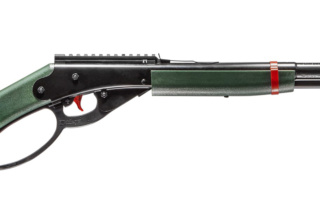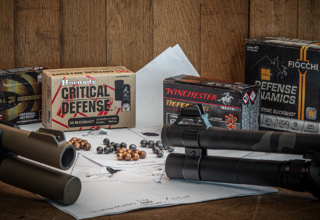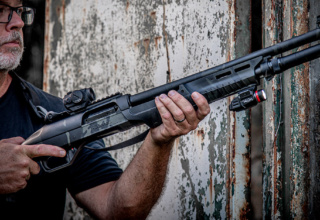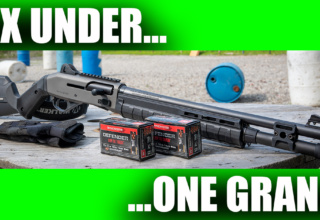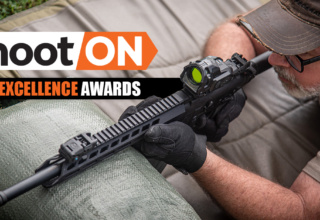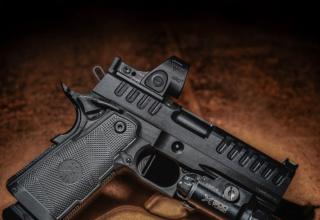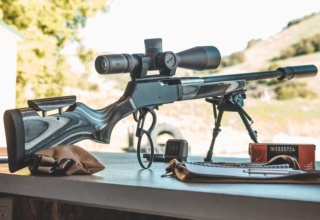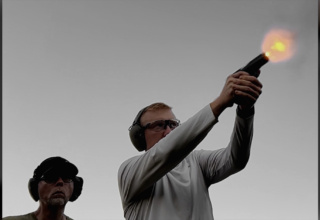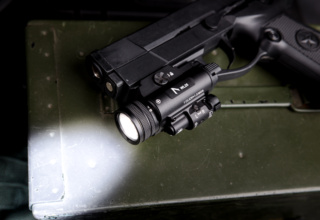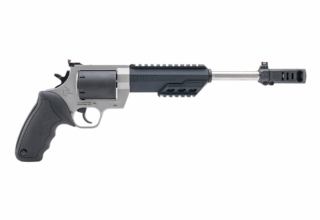A new spin on legacy technology has placed reliable, hunting-grade air rifles into sportsmen’s hands. Here’s one of the pack leaders…
by Rick Eutsler
When you think of iconic firearm brands from America history, Winchester is certainly going to be on the short list. When you think of the most iconic airgun brands in American history, the name that tops that list is Daisy. In fact, I bet that for most folks reading this article, their first time pulling the trigger was probably behind a Daisy airgun. So, it’s no surprise that the most iconic airgun brand would be the company releasing airguns under the name Winchester—and they’ve been doing it for many years.
The airguns of my youth were the typical single-cock BB variety or the multi-pump BB/pellet models. None really generated more than tin can accuracy and power.
I started shooting Winchester airguns when my love for airguns, once set aside for firearms, was renewed after learning that the land of airguns was much broader than I had ever imagined. Early on, I was most interested in spring-powered airguns because they delivered the most power at the lowest price point. Some tipped at 30 ft/lbs, which was a massive improvement to the 2 to 5 ft/lbs I had grown up with. I was, however, yet to be introduced to PCP-powered airguns and, moreover, big-bore airguns.
Here’s an interesting side note: neither big-bore airguns nor PCP-powered airguns are anything new. Lewis and Clark carried a repeating big-bore airgun on their famous expedition. It was called the Girandoni, in service from about 1780-1815, and was fielded by the Austrian Army. Capable of shooting a .46 (or .51 in some models) caliber round ball at +/- 500 fps, it delivered lethal power and accuracy out past 100 yards. With a 20-round magazine, it was a true repeater powered by a hand filled reservoir which doubled as the buttstock of the rifle. I admit, learning about this type of airgun completely changed my perspective of the sport altogether.
The Winchester Model 70-35 and Model 70-45 use the same basic technology today. In this article, we’ll focus on the .35 caliber variant.
The Winchester Model 70-35 is a .35 caliber PCP-powered airgun that operates from a 6-shot rotary magazine, cocked by a side lever action on the right side of the receiver. The hardwood stock has a slightly raised cheekpiece on the left side, favoring right-handed shooters, but not so much that lefties would feel it to be uncomfortable. The trigger is adjustable and breaks at about three pounds from the factory. The receiver is grooved for 11mm scope mounts. When picking mounts, make sure that they are tall enough to clear the magazine.
The PCP part of the airgun stands for “pre-charged pneumatic” and describes how the Winchester makes it power. Most shooters will be familiar with the old multi-pump airguns. You pump them ten times and take your shot. To shoot again, you pump them another ten times and take your next shoot. The PCP-type airgun stores hundreds of “pumps” in an air cylinder and then dishes out a little for each shot. How much? That is handled by the balance between the valve and the hammer. The Winchester’s 320 cc on-board air cylinder operates with a max fill of 230 bar or +/- 3460 psi. To fill it, you will need a special compressor, hand pump, or an air tank capable of holding more than 230 bar. The current move is to personal, portable compressors. There are many on the market—some that run on 12v—with prices starting under $500. A quality hand pump will run about $200.
Once you have the cylinder charged to capacity, you can start looking at what you want to use for ammo. In the big-bore airgun world, .35 caliber ammo is perhaps the most flexible. You have commercially made pellets as well as specialty hand cast boutique rounds by small bullet makers all over the world. It’s a great caliber because it has so many options.
The Winchester’s one limitation is that it fires from a magazine, so whatever ammo you choose, you need to make sure that it’s not too long to fit and cycle properly. Fortunately, there are a couple of Winchester-branded options. The 95 grain hollow point fires at over 800 feet per second, delivering nearly 138 ft/lbs of energy. The 127 grain flat point fires at 686 fps, delivering over 132 ft/lbs of energy. For maximum velocity and minimizing flight time, you can opt for the 81.02 grain JSB pellets, which travel at 890 fps and deliver over 142 ft/lbs of energy at the muzzle.
Operating and shooting the Winchester big-bore airgun is straightforward. You’ll load your pellets or bullets into the 6-shot rotary magazine, open the side lever cocking arm and insert the mag. Once loaded, you are ready to roll, so make sure that you’ve set your safety located on the right side of the breach before you get started. Also, you can’t decock the rifle and then cock it again with the mag loaded or you’ll double feed another round into the breach. If you are going to decock the airgun, be sure to pull open the lever and pull the mag out first.
Pulling the trigger for the first time may be a bit of a surprise for most folks not used to shooting airguns. There’s virtually no recoil, and the report is much less than that of a .22LR, mostly due to the integrated “moderator,” which is airgun lingo for “suppressor.” It really takes the bark out of the report of the rifle, and because it’s on an airgun and permanently attached to the rifle, you don’t need anything in the way of a license. In fact, the beauty of this product line is that are no federal regulations, at this point, on any of it. This greatly reduces the barrier to entry for folks who want to experience shooting or hunting but would otherwise be intimidated or unable to do so.
With all this power on tap, the Winchester Model 70-35 is ideal for hunting medium game and predators. Where legal, it’s also effective on thin-skinned game like deer. As it is with all hunting applications, make sure you know your gear and its true capabilities with you behind the trigger, such as general accuracy and accuracy at various ranges. The most important thing to remember when hunting with any big-bore airgun is the flight time of the projectile. Your game will probably never hear the shot when you are hunting with a high-powered rifle firing at 2500-plus feet per second. The bullet, going faster than the speed of sound, gets there long before animals ever have a chance to react. This is not the case with a big-bore airgun. Think of big-bore PCP airgun projectile flight time as sitting between archery and black powder and that will give you an idea of how to make the most ethical hunting choices. While you may be able to get some great accuracy on paper out to 100 yards and beyond, it’s not effective if the game is gone by the time your projectile gets there. My general rule is to keep all my hunting shots inside 50 yards. This gives me the best potential to get that clean, one-shot kill that I’m looking for.
While the essence of things has not changed much in airguns over the past two hundred years, the reality is that they are totally different. The reason the PCPs of the Lewis and Clark days did not take over the wild West is that they were hard to use and generally unreliable. That’s not what you are looking for in a survival situation. Fortunately, today’s big-bore PCPs, like the Winchester Model 70-35 and Model 70-45, are easy to fill, reliable, and most are easily user serviceable. Also, they deliver serious power and accuracy, whether on the range for some target practice or out in the woods to put meat on the table.
About the Author: Rick Eutsler is an airgun expert and reviewer, and he heads up AirgunWeb. Rick’s AirgunWeb channel has over 900 airgun-related videos with new content added weekly.
- Winchester’s Model 70-35 PCP Air Rifle - March 13, 2020









